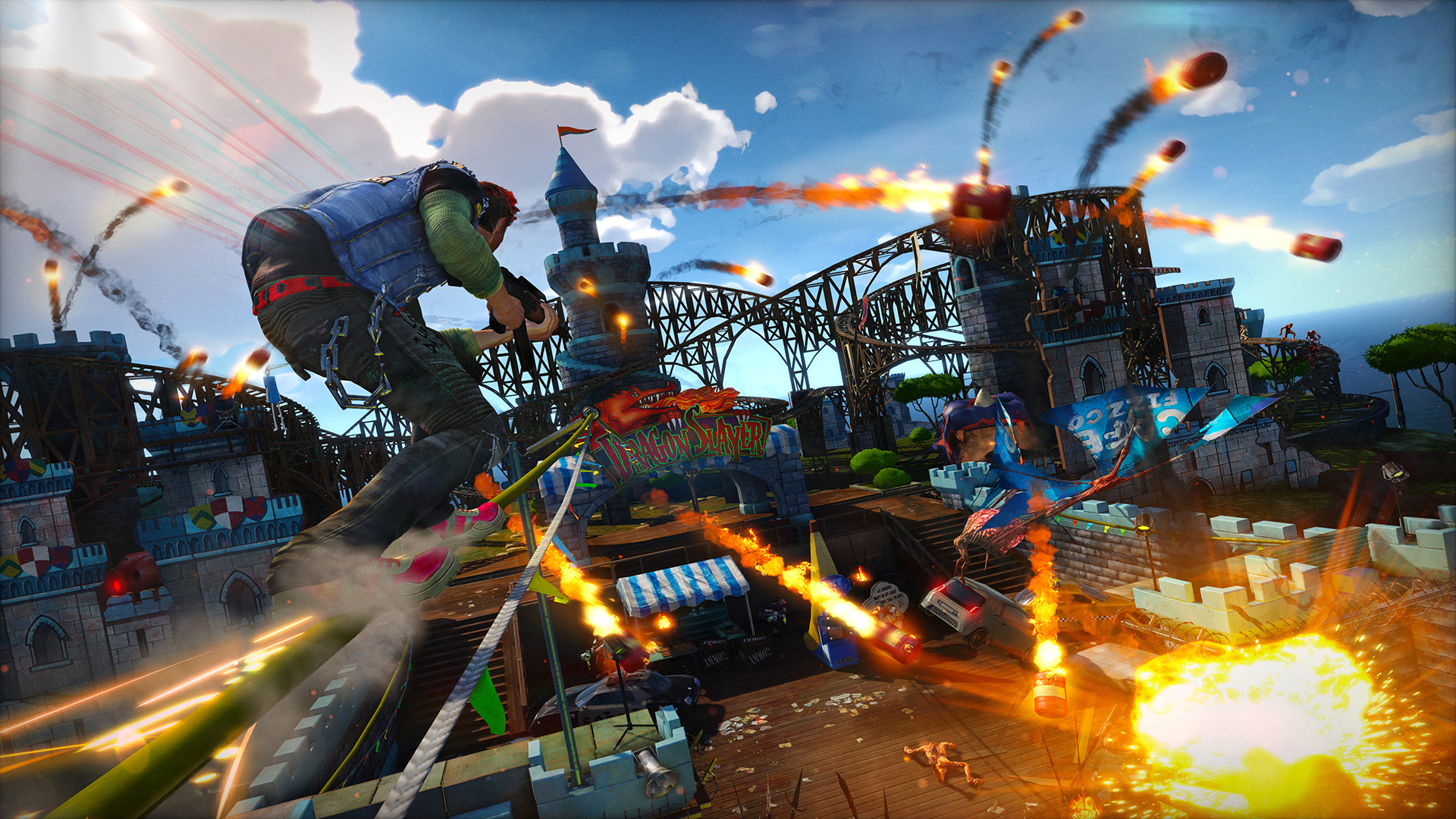Welcome fellow gamers! Today, we take a trip down memory lane with one of the most iconic NES games of all time – Smash TV. As we all know, video games have the ability to transcend time and create memorable experiences. The nostalgia factor is a big enticement for gamers, pulling us back in time to relive the joys of our childhood. Smash TV is a game that holds a special place in the hearts of many gamers and we’re excited to give our take on this classic game. So, what makes this game special? For starters, it is one of the pioneers of the top-down shooter genre. Developed by the gaming titans Williams Entertainment and Eugene Jarvis, it was released in 1990 which was a relatively early era in gaming. In this article, we will delve deeper into all aspects of this fantastic game. From its development to its gameplay mechanics, we will explore it all!
History of Smash TV
Smash TV is an arcade-style video game developed and published by Williams Electronics in 1990. The game features a dystopian theme and a gameplay style that is reminiscent of old-school arcade games. It became an instant hit, popular for its frenetic gameplay, high-tech weaponry, and unique game mechanics.
The game is a spiritual successor to another popular arcade game, Robotron: 2084, which was also developed by Williams Electronics. Despite being released over 30 years ago, the game’s core gameplay mechanics are still well-received among the gaming community.
Smash TV’s impact on the gaming industry is undeniable. Its success led to the development of other arcade-style games like Total Carnage and Super Smash TV. The game’s popularity inspired other developers to create similar games that feature themes of violence and dystopia.
When Smash TV was first released, it received heavy criticism due to the nature of its violent content. Some gamers found it a little too intense and gory. However, the game quickly became a cult classic due to its unique gameplay mechanics and frenetic style. It was a commercial success and was ported to several gaming platforms, including the NES, Game Boy, and Sega Genesis.
Smash TV’s legacy continues even to this day, with several modern games adopting similar gameplay mechanics and themes. The game’s success helped pave the way for other wildly successful arcade-style games like Mortal Kombat and Street Fighter II.
In conclusion, Smash TV has an impressive history in gaming. Its development and release marked a shift in the industry, and its success paved the way for other popular arcade-style games that followed. Its impact continues to be felt even today, with the legacy of arcade-style gaming still seeing an influence from the withstood popularity of pre-boom games like Smash TV.
Gameplay Mechanics
When discussing the gameplay mechanics of Smash TV for NES, we must first talk about the controls and interface. This game utilizes a simple controls system that is easy to master and allows the player to focus on the action. The directional pad is used to move, and only two buttons are utilized: one for firing and one for special weapons. This straightforward control scheme simplifies the experience and makes it accessible for players of all skill levels.
The play style of Smash TV can be described as top-down shooter with twin-stick controls, meaning the movement and shooting are independent of each other. This play style makes the gameplay feel smoother and more dynamic, allowing players to aim their weapon one way while moving in another direction.
Power-ups are an essential aspect of Smash TV’s gameplay. These power-ups can provide health, increase weapon damage, or enhance the player’s mobility. Strategically gathering these power-ups is important for players looking to progress through the game’s levels.
In conclusion, Smash TV’s intuitive controls, twin-stick play style, and innovative power-up system make it an enjoyable and engaging gaming experience. These mechanics, when combined with the game’s arcade-style presentation, make it a perfect game to revisit and enjoy with a burst of nostalgia.
Graphics and Sound
One of the standout features of Smash TV on the NES is its unique combination of graphics and sound. The graphics are well-designed, with sharp, colorful pixels and a retro style. The game’s top-down view makes it easy to distinguish characters and obstacles, which is crucial since the gameplay involves fast action and often intense battles.
Furthermore, the sound effects in Smash TV are superb. From the satisfying chime when collecting a power-up to the electrifying explosions of boss fights, the soundscape of the game is masterfully designed. It successfully creates a feeling of excitement and danger that keeps players hooked.
Together, these elements contribute to the overall vibe of the game. With its retro graphics and electrifying sound effects, Smash TV feels like a living, breathing time capsule from the golden age of arcade gaming. There’s a sense of nostalgia that comes with playing this game, which perfectly complements the fast-paced, addictive gameplay.
In conclusion, the graphics and sound in Smash TV are integral to the game’s experience. They work together to create a unique ambiance that draws players into the world of the game. The combination of retro graphics and well-designed sound effects gives the game a sense of authenticity that sets it apart.
Replayability and Legacy
One of the defining features of Smash TV is the game’s lasting appeal. Despite being released over three decades ago, the game continues to captivate gamers of all ages. The longevity of Smash TV can be attributed to several factors, including the game’s addictive gameplay and unique visual style.
When compared to modern gaming trends, Smash TV may seem simplistic and outdated. However, the game’s top-down, twin-stick shooter mechanics inspired a legion of games that followed. Titles like Geometry Wars and Helldivers took cues from the Smash TV playbook and expanded upon its core gameplay concepts.
For many gamers, though, Smash TV is much more than just a vintage arcade game or an influential work of game design. The game has a special place in the hearts of many players who grew up in the 80s and 90s. For these gamers, Smash TV symbolizes the fun, excitement, and possibility of a bygone era. The game represents a simpler time when gaming was more about having fun with friends than chasing trophy achievements or unlocking rare cosmetics.
As such, it’s easy to understand why there is still an active community dedicated to playing and discussing Smash TV. Whether it’s through online forums or personal gaming blogs, players continue to share their love for Smash TV and its legacy.
In conclusion, despite being several decades old, Smash TV remains a beloved and essential game for gamers of all ages. With its distinctive gameplay mechanics and unforgettable visual style, it’s no wonder why the game continues to endure as a classic of the retro gaming era.
Recommendation and Conclusion
After analyzing Smash TV NES Game, we can confidently conclude that it’s a unique and enjoyable game. The game’s emphasis on fast-paced action and exhilarating gameplay is bound to appeal to players of all ages. While the graphics and sound may seem outdated by modern standards, they still hold up well and play a significant role in building the game’s unique atmosphere.
The game’s replayability factor is high, and gamers are likely to play it multiple times due to its challenging and engaging gameplay. While it may not be as popular as it once was, it still holds a special place in the hearts of gamers worldwide.
Our final verdict on this game is that it’s a must-play for vintage game enthusiasts. It’s an excellent representative of the gaming era of the past, and Smash TV NES Game has stood the test of time. Anyone who enjoys fast-paced action games with unique play styles and power-ups is bound to enjoy this game.
In conclusion, we highly recommend playing Smash TV NES Game to experience gaming nostalgia at its finest. It’s an essential game in the history of the gaming industry and deserves to be recognized as such.
FAQs
1. What is Smash TV?
Smash TV is a top-down arcade shooter game developed by Williams Electronics and released for the NES in 1991. The game is set in the futuristic year of 1999 and features a game show where contestants fight for their lives to win prizes and cash rewards.
2. What makes Smash TV special?
Smash TV is special because it’s a fast-paced, challenging game that emphasizes arcade-style action. It offers simple, addictive gameplay that is easy to pick up but difficult to master. The game’s unique blend of violence and humor, along with its memorable characters and game show theme, makes it a classic among retro gamers.
3. How important are power-ups in Smash TV?
Power-ups play a critical role in Smash TV, as they provide players with increased firepower, speed, and invincibility. They can make the difference between winning or losing a game, and they add an element of strategy to the gameplay. Collecting power-ups is essential for progressing through the stages and defeating the game’s bosses.
4. What is the replayability of Smash TV?
Smash TV has high replayability due to its challenging difficulty and random generated levels. The game’s design ensures that no two playthroughs are the same, so players can continue to enjoy the game and strive to improve their scores. This adds value to the game, even 30 years after its initial release.
5. Who would enjoy playing Smash TV?
Smash TV is best suited for retro gaming enthusiasts who enjoy challenging arcade games with a high level of difficulty. The game is also a great option for those who appreciate classic graphic design and sound effects. Players who enjoy fast-paced shooters with a fun theme will find Smash TV to be a fun and entertaining game.




